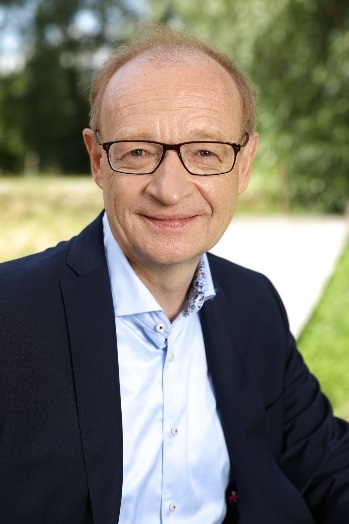
Bildnachweis: ECBF.
Plattform Life Sciences met Michael Brandkamp at this year’s EFIB conference in Vienna, Europe’s leading event on industrial biotechnology and bioeconomy. The ECBF is the first venture fund exclusively focused on bioeconomy and the circular bioeconomy in Europe. With a target size of EUR 250 million, to which the European Investment Bank (EIB) has committed EUR 100 million, ECBF is an important financial instrument in achieving the European Green Deal goals of making Europe climate neutral by 2050.
Plattform Life Sciences: Mr Brandkamp, what is your first impression of this conference?
Brandkamp: I felt it was a great privilege to speak at the very beginning of the conference. And it is of course a great pleasure for me and the fund to meet great companies and great innovations. We are still the “new kids on the block”, a start-up in the scene. But this scene welcomes us openly and I was able to get in touch with several entrepreneurs.
Which companies have particularly interested you?
There are certainly a few that stick in my memory. One company, for example, harvests seaweeds and processes them in its own biorefinery into high-quality “foods and feeds” ingredients. Seaweed is normally only used directly as food. However, this company can produce even higher-value products through its technologies and thus create further value. food & feed is an enormously important investment field. Especially the agricultural technology sector. The deal flow in this area is currently at 60%. All other areas of bioeconomy, such as building materials, cosmetics, textiles make up the remaining 40%.
Do you see a growing demand of bioeconomy innovations in general?
There is a noticeable demand from end customers for new products. More and more new, small brands are emerging. The market is highly competitive. The big players, who had divided the market among themselves for many years, are suddenly interested in the small ones. And the small ones, even before they themselves belong to the big ones, are already feeling the pressure from below. One might think that the market is big enough that the big players wouldn’t mind a little competition. The opposite is true. There is a new “awareness” of the customer and brand fixation is increasingly dissolving.
So these new companies are a thorn in the flesh of the long-established…
Yes, it started in the beverage segment. The brand Fritz-Kola is a good example, followed by the spice market with Just Spices. In the meantime, vegetarian fish and meat alternatives such as Beyond Meat and Vantastic Fish Fingers can be bought in normal supermarkets. Everyone is finally awake. What a positive development, right?
Are these market shifts permanent?
Of course, there is still a lot of risk for investors. The question remains: how sustainable will the shift in consumer demand remain? Is it just a small upward swing? Or will it stay and reach larger segments of the population? This question is of course difficult to answer. But it is a risk we all live with. If it disappears again and nobody cares, then many business models will fail again. Of course, we assume the opposite. We see new brands establishing themselves and closing in on the big players. We also expect more consolidations which will lead to good exits for investors. This will also lead to good exits for investors.
What do you base your assessments on?
We cannot predict market developments exactly. But there are more and more signs that the entire market is changing here. And there is also massive political support for these developments to solidify, such as through the Green Deal. The pull from the market is supported by a push through policy frameworks. In addition, there is innovation and entrepreneurship. The change in end-customer demand has also expanded to the B2B market. Corporates are now talking intensively about CO2 as a cost factor, about certificates, about image. Managers are driven by their own responsibility, by ESG regulations, by investors, politics and the generally changed social climate.
This could also be another hype cycle.
No. Bioeconomy is not just one “hip” technology that everyone is betting on, but a thousand different innovations in an unmanageable number of applications. The speed of innovation is also faster. Sooner or later, the transformation processes triggered by this will no longer be designed at a desk. The state can only provide framework conditions and create incentives. If necessary, it must guide developments through strict restrictions. But there will be no master plan.
What role does the ECBF play in this transformation process?
We go wherever we see innovations that already have a product market fit. If that is the case, we scale up these companies and then earn a share of their success. The duality of value is important to investors: doing good and earning money with it. We invest in these stories.
Can a fund with EUR 250 million make any impact at all in this highly competitive area?
Yes, it is small money compared to some recent seed and A&B-financing rounds of innovative companies. But: we are the icing on the cake. We are the qualified investor in this market with a lot of expertise and the network to go with it. This trust in us is growing and establishing itself, especially with other investors. If we lead financings, others will follow. For example, we financed the company ProLupin GmbH. They produce food ingredients from the plant “sweet lupine”. EUR 20 million went to this. We made a profit of EUR 5 million in return. We assume that the leverage of comparable companies can become even greater. If we invest EUR 250 million, maybe EUR 2.5 billion will be moved.
But there is no lack of liquidity in the market…
Certainly, but the bottleneck is knowing which investment is sustainable. And this is where we come in and set the tone. Also: ProLupin can so far only be bought in Germany, Austria and Switzerland. But not in the Netherlands. The company should and must expand to a European level. The goal is EUR 100 million a year by 2025, and we are working towards this goal. To bring the brand even further forward, capital is needed. And even if we only move EUR 2.5 billion with EUR 250 million that‘s still a drop in the ocean. Game-changers will notice that something big is happening here.
Mr Brandkamp, thank you for the interview.
The interview was conducted by Urs Moesenfechtel.
ABOUT THE INTERVIEWEE
Dr Michael Brandkamp is a general partner of the European Circular Bioeconomy Fund (ECBF).
Autor/Autorin
Urs Moesenfechtel, M.A., ist seit 2021 Redaktionsleiter der GoingPublic Media AG - Plattform Life Sciences und für die Themenfelder Biotechnologie und Bioökonomie zuständig. Zuvor war er u.a. als Wissenschaftsredakteur für mehrere Forschungseinrichtungen tätig.



